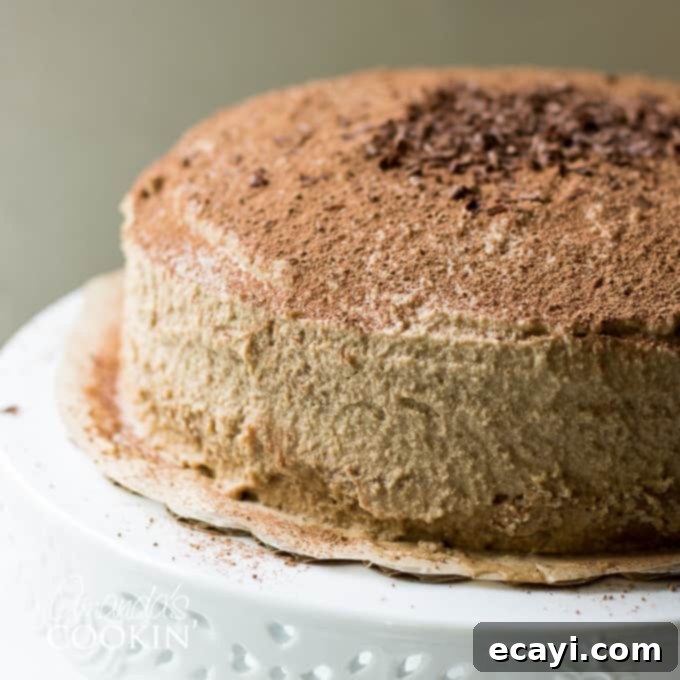Decadent Homemade Tiramisu Cake: Layers of Espresso-Infused Perfection
Prepare to embark on a delightful culinary journey with our exquisite Tiramisu Cake, a stunning layered dessert that beautifully captures the essence of the beloved Italian classic. Imagine sinking your fork into moist cake layers, generously infused with rich espresso, followed by the luxurious embrace of fluffy mascarpone cheese filling, and finally, a silky, decadent coffee-flavored icing that ties every element together. This isn’t just a cake; it’s an experience, a masterpiece of flavors and textures designed to impress and enchant. Perfect for any celebration or simply to elevate your everyday dessert table, this homemade Tiramisu Cake promises an unforgettable taste of Italy.
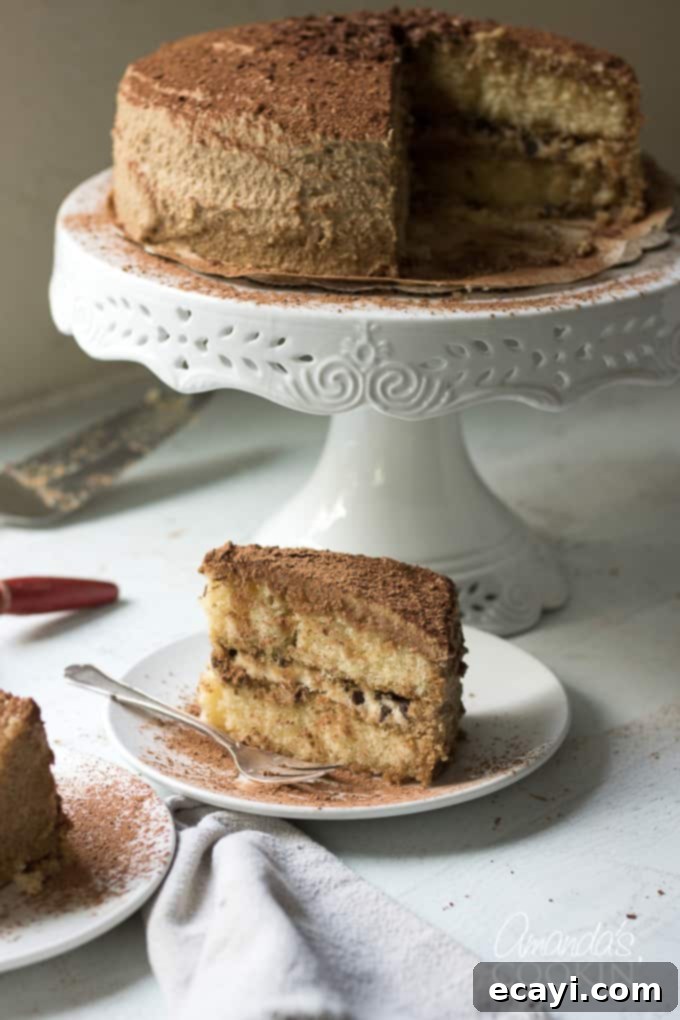
For many, the first encounter with a traditional tiramisu dessert is nothing short of magical. That harmonious blend of delicate ladyfingers or sponge cake soaked in bold espresso, often enhanced with a touch of liqueur, enveloped by a cloud-like mascarpone cream, creates an enduring memory. My own love affair with this dreamy Italian confection began long ago, leading me to first craft and share this particular cake recipe back in May of 2009. It was during an engaging online baking group that this layered tiramisu cake truly came to life, becoming a cherished staple in my recipe collection.
The name “Tiramisu” itself is wonderfully evocative. Derived from the Italian phrase “tirami su,” it literally translates to “pick me up,” “cheer me up,” or “lift me up.” This perfectly encapsulates the dessert’s delightful effect on anyone who savors its rich, caffeinated, and creamy layers. It’s more than just a sweet treat; it’s a comforting embrace, a boost of energy and joy in every spoonful.
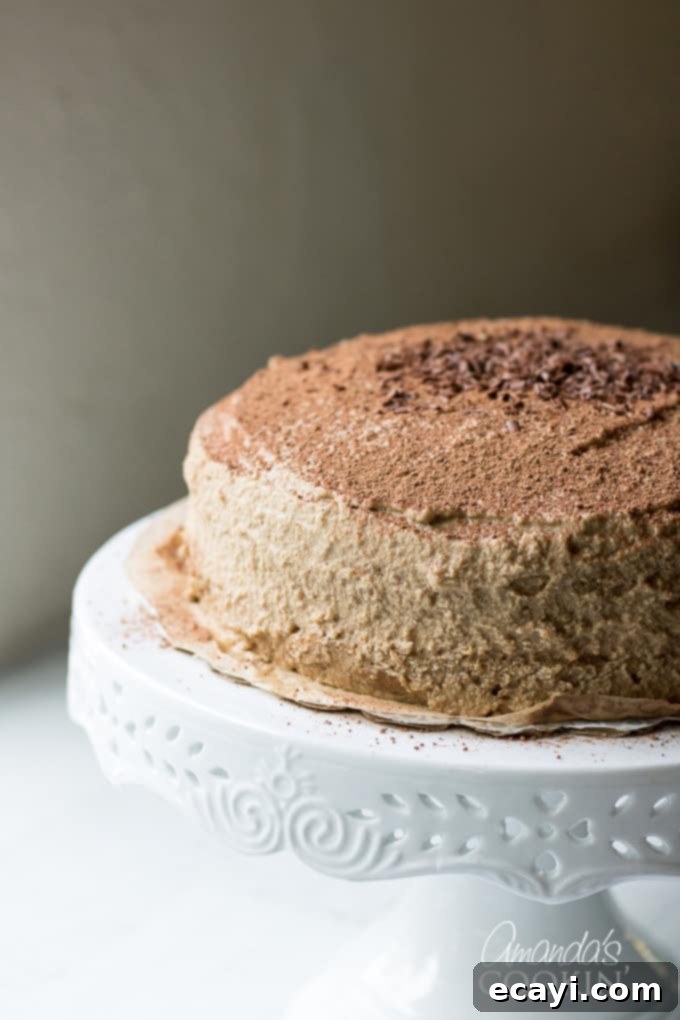
Unveiling the Tiramisu Cake: A Scratch-Made Masterpiece
My profound appreciation for tiramisu led to the creation of this specific tiramisu cake recipe, a truly remarkable way to enjoy all the iconic flavors of the traditional dessert, reimagined within a stunning layered cake structure. Baking this cake from scratch elevates the experience, allowing you to control the quality of every ingredient and achieve a depth of flavor that is truly unparalleled. I can confidently say this is one of the most satisfying and delicious cakes I’ve ever had the pleasure of baking. If you harbor a passion for baking, you’ll be pleasantly surprised by how approachable and enjoyable this recipe is, yielding professional-looking results with relative ease.
RELATED: If you enjoy baking unique and flavorful desserts, you might also like this delightful recipe for – Pistachio Cake
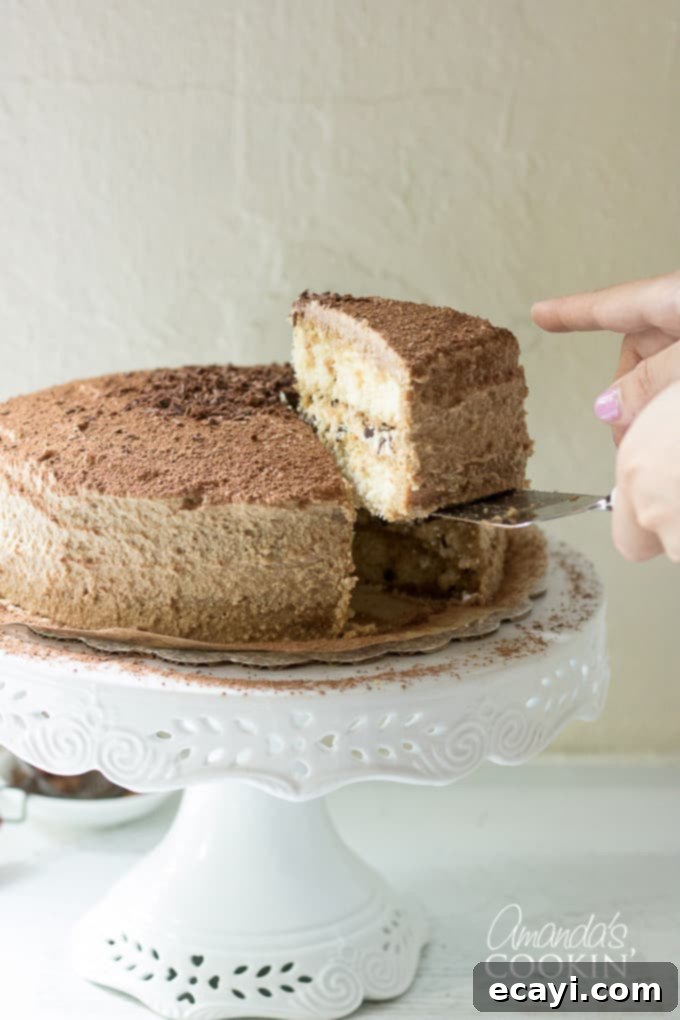
What Exactly is a Tiramisu Cake?
A Tiramisu Cake transforms the classic Italian dessert into a magnificent layer cake, incorporating nearly all the essential components of its traditional counterpart, but with a cake-centric twist. Instead of relying on espresso-soaked ladyfingers or sponge cake, this recipe features tender, homemade cake layers that are delicately brushed with a fragrant, homemade espresso syrup. This ensures every bite of the cake is infused with that signature rich coffee flavor.
Between these perfectly moist cake layers, you’ll discover a luscious filling made from creamy mascarpone cheese, generously interspersed with finely chopped chocolate for an added textural dimension and depth of flavor. The entire cake is then gracefully enveloped in a light yet rich homemade mascarpone-espresso icing, creating a smooth and irresistible exterior. For the quintessential finishing touch, the cake is dusted with a fine layer of cocoa powder, enhancing its visual appeal and adding a subtle hint of bitterness that perfectly complements the sweetness. This Tiramisu Cake is more than just a dessert; it’s a showstopper, making it an ideal choice for celebrating special occasions, holidays, or any moment that calls for something truly extraordinary.
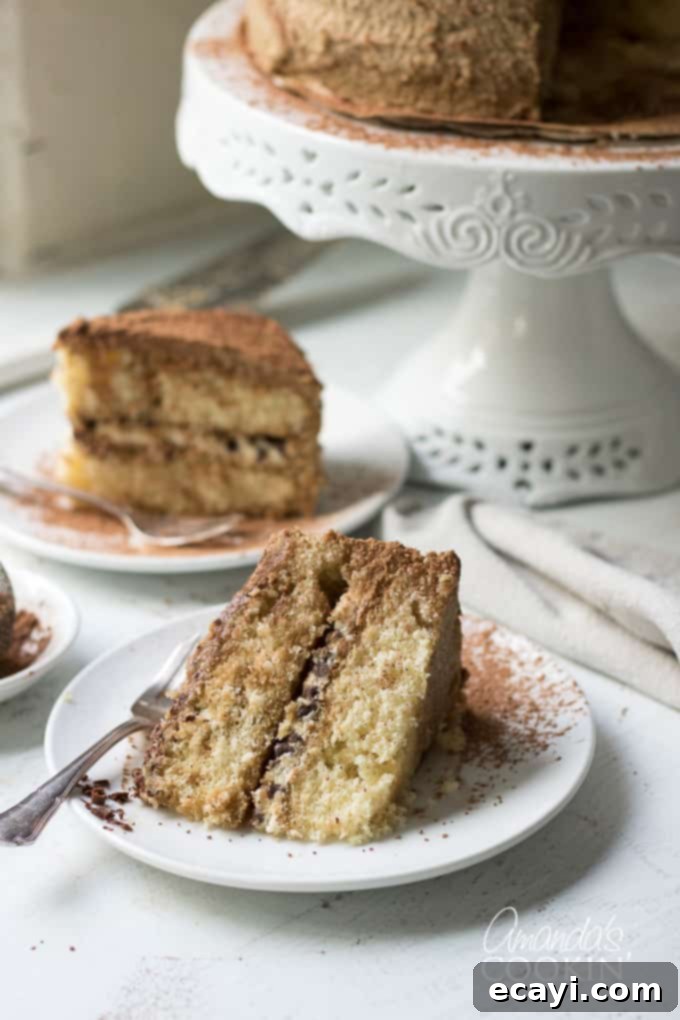
Essential Ingredients for Your Tiramisu Cake
While the ingredient list might appear extensive at first glance, please don’t let it deter you! For those who genuinely enjoy the process of baking, assembling this tiramisu cake is a rewarding experience. Each component plays a crucial role in building the incredible flavor profile and stunning presentation of this dessert. When you’re finished, you’ll undoubtedly stand back, admire the beautiful creation, and feel a deep sense of accomplishment and pride. Let’s delve into the key ingredients that make this cake truly special, ensuring you have everything ready for a seamless baking adventure.
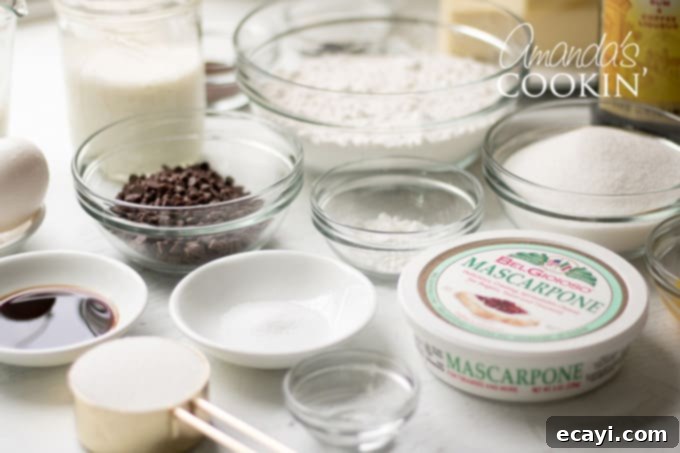
- Cake Flour: Essential for a tender, fine crumb, differentiating it from all-purpose flour.
- Baking Powder & Baking Soda: The leavening agents that give our cake its light and airy texture.
- Salt: A pinch enhances all the other flavors, balancing the sweetness.
- Unsalted Butter: Room temperature butter is key for creaming properly with sugar.
- Sugar: Provides sweetness and moisture to the cake layers.
- Eggs: Add structure, richness, and emulsification to the batter.
- Vanilla Extract: A foundational flavor that complements both coffee and mascarpone.
- Buttermilk: Adds tenderness and a slight tang, reacting with baking soda for lift.
- Instant Espresso Powder: The heart of the tiramisu flavor, delivering a concentrated coffee taste.
- Water: Used for the espresso extract and simple syrup.
- Amaretto (or Kahlua or Brandy): A classic tiramisu addition that lends a subtle, sophisticated boozy note. Choose your preferred liqueur!
- Mascarpone Cheese: The star of the filling and frosting, providing unparalleled richness and creaminess.
- Confectioners’ Sugar: For sweetening the mascarpone cream and ensuring a smooth, lump-free texture.
- Heavy Cream: Whipped to create that light, airy texture in the filling and frosting.
- Chocolate: Finely chopped bittersweet or semisweet chocolate adds a delightful surprise texture within the filling.
- Cocoa Powder: For dusting the finished cake, providing a beautiful presentation and a complementary bitter note.
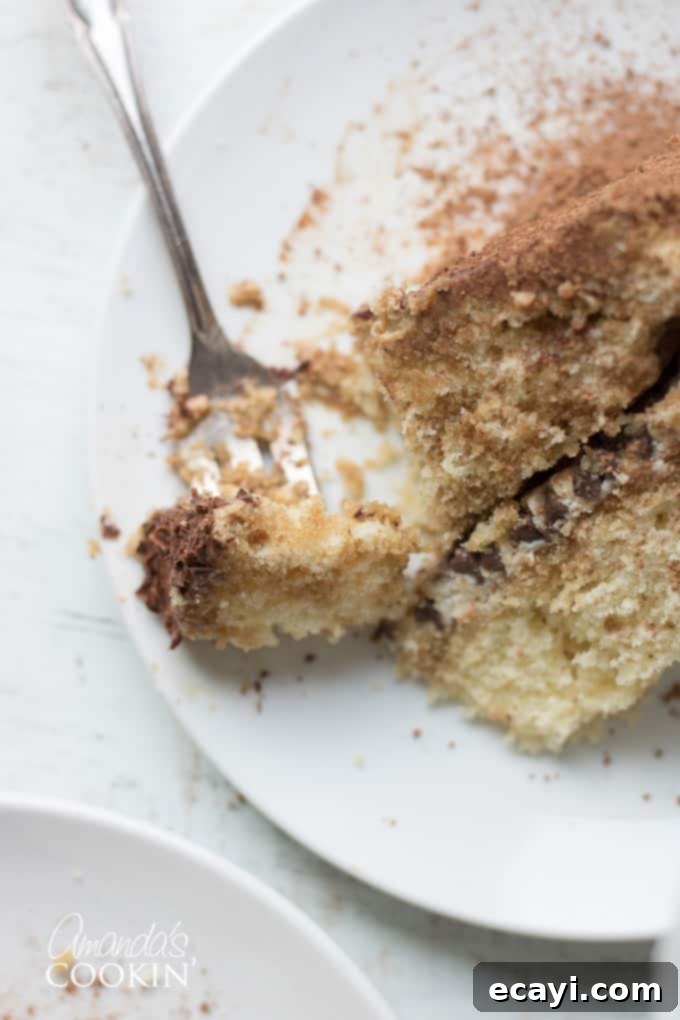
Essential Kitchen Tools for Baking Success
Having the right tools at hand can make the baking process significantly smoother and more enjoyable. While not all items are strictly necessary, these recommendations will help you achieve the best possible results for your Tiramisu Cake, from mixing the batter to perfectly frosting the layers.
- Stand mixer: A true workhorse for creaming butter and sugar, and whipping cream.
- 9-inch round cake pans: Essential for baking uniform cake layers.
- Sifter: For ensuring your dry ingredients are lump-free and evenly distributed.
- Mixing bowls: Multiple bowls are handy for separating wet and dry ingredients and preparing different components.
- Rubber spatula: Indispensable for scraping down bowls and gently folding ingredients.
- Wire cooling racks: Crucial for cooling cakes thoroughly to prevent sogginess.
- Parchment paper circles: A baker’s best friend for preventing sticking and ensuring easy release.
- Saucepan: For preparing the espresso syrup.
- Whisk: For blending ingredients, especially the mascarpone mixture.
- Cake plate: For a beautiful presentation.
- Measuring cups and spoons: Accuracy is key in baking!
- Offset icing spatula: For smoothly spreading the frosting.
This delightful recipe is adapted from Dorie Greenspan’s renowned cookbook, Baking: From my Home to Yours, a true treasure for any home baker.
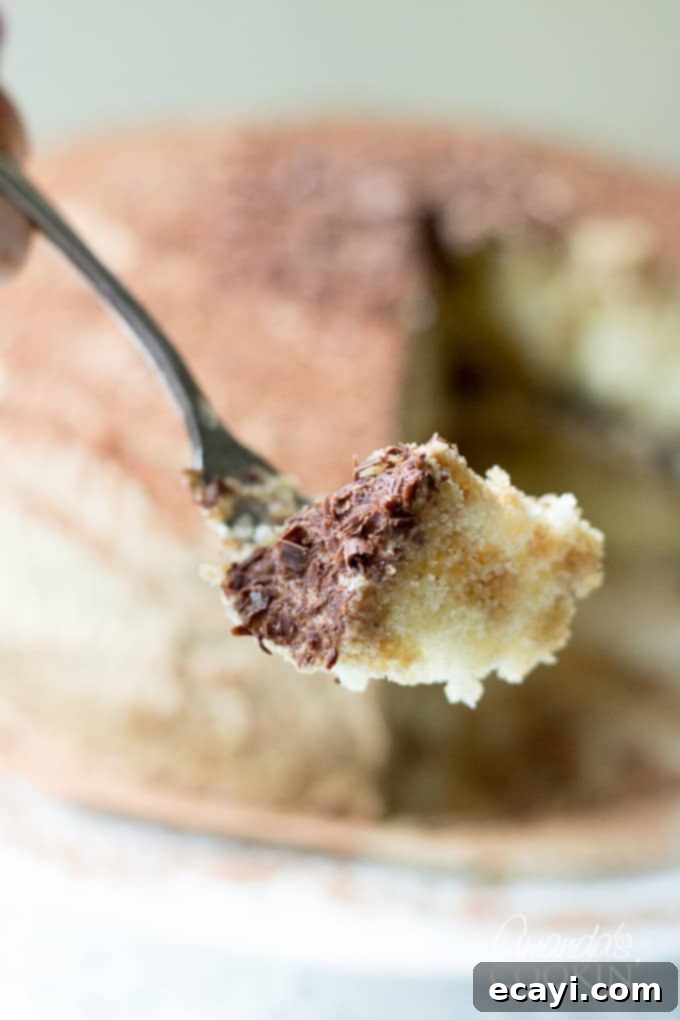
Step-by-Step Guide: Crafting Your Tiramisu Cake
Creating this magnificent Tiramisu Cake might seem like a grand endeavor, but by following these detailed steps, you’ll find the process both manageable and incredibly rewarding. Precision in baking often leads to spectacular results, so take your time and enjoy each stage of bringing this Italian-inspired dessert to life. Let’s start with preparing your oven and cake pans.
First, ensure your oven is properly preheated. Center a rack in your oven and preheat it to 350 degrees F (175 degrees C). This consistent temperature is vital for even baking. Next, prepare two 9×2 inch round cake pans. Butter the insides thoroughly, then dust them with flour, tapping out any excess. This step, combined with lining the bottoms of the pans with parchment or wax paper, is crucial for preventing your cakes from sticking and ensuring an easy release. Place the prepared pans on a baking sheet, which makes them easier to handle in and out of the oven.
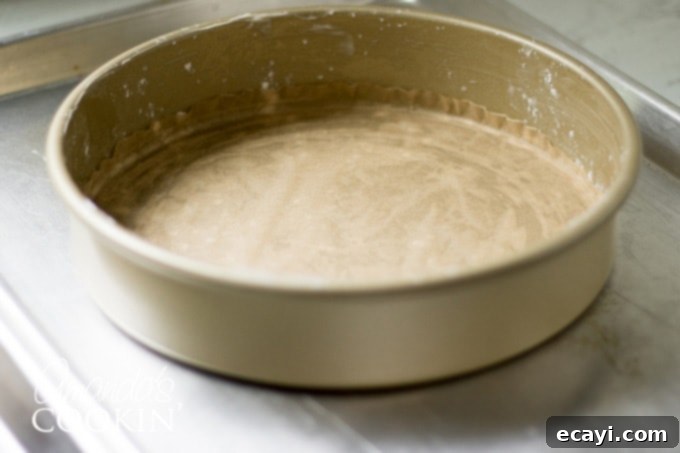
To Prepare the Cake Layers:
- In a medium bowl, sift together the cake flour, baking powder, baking soda, and salt. Sifting is important as it aerates the flour and removes any lumps, ensuring a lighter, more uniform cake crumb. Set this dry mixture aside.
- In a large mixing bowl, preferably using a stand mixer fitted with a paddle attachment (or with a hand mixer), beat the softened unsalted butter on medium speed until it’s light, fluffy, and creamy. This typically takes about 1-2 minutes.
- Gradually add the granulated sugar to the butter, beating for another 3 minutes until the mixture is pale and airy. This creaming process incorporates air, which contributes to the cake’s tender texture.
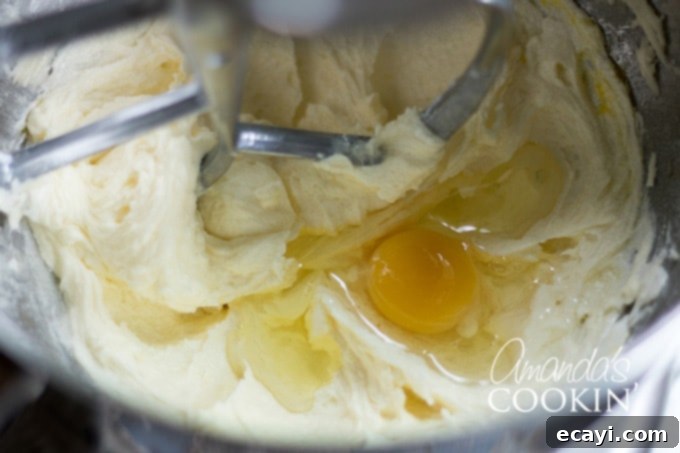
- Add the eggs one by one, beating for about 1 minute after each addition to fully incorporate. Then add the egg yolk and beat again. Don’t worry if the mixture appears slightly curdled; it will smooth out as you add the dry ingredients. Beat in the pure vanilla extract.
- Reduce the mixer speed to low. Begin adding the dry ingredients alternately with the buttermilk, starting and ending with the dry ingredients. Add the dry ingredients in three separate additions, and the buttermilk in two. This method ensures proper emulsification and prevents overmixing.
- After each addition, scrape down the sides of the bowl with a rubber spatula to ensure all ingredients are well combined. Mix only until the dry ingredients have just disappeared into the batter. Overmixing can lead to a tough cake.
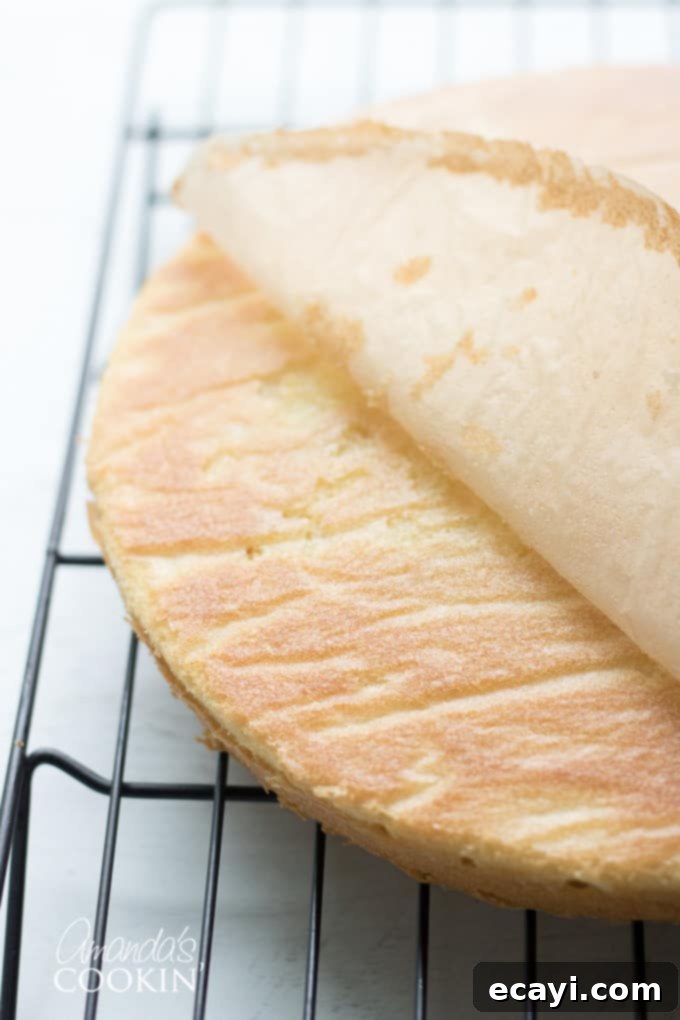
- Divide the batter evenly between your two prepared cake pans. Use a rubber spatula to gently smooth the tops of the batter. Bake for 28-30 minutes, rotating the pans halfway through to ensure even baking. The cakes are fully baked when they are golden brown, springy to the touch, and a thin knife or toothpick inserted into the centers comes out clean.
- Once baked, transfer the cakes in their pans to a wire cooling rack and let them cool for approximately 5 minutes. This brief cooling period helps the cakes firm up. Then, run a knife around the sides of the pans to loosen the cakes, carefully unmold them, and peel off the parchment paper liners. Invert the cakes and allow them to cool completely to room temperature right side up on the wire rack. Cooling completely is essential before frosting to prevent the frosting from melting.
Crafting the Espresso Extract:
In a small, heatproof cup, stir together the instant espresso powder and boiling water until the powder is fully dissolved and blended. This creates a concentrated espresso extract that will infuse our syrup and frosting with deep coffee flavor. Set it aside to cool slightly.
Preparing the Espresso Syrup:
Combine the water and sugar in a small saucepan. Bring the mixture just to a boil over medium heat, stirring occasionally until the sugar is completely dissolved. Once boiling, remove it from the heat. Pour this simple syrup into a small heatproof bowl. Now, stir in 1 tablespoon of your prepared espresso extract and your chosen liqueur (amaretto, Kahlua, or brandy). This fragrant syrup is what will moisten and flavor your cake layers. Set aside to cool to room temperature.
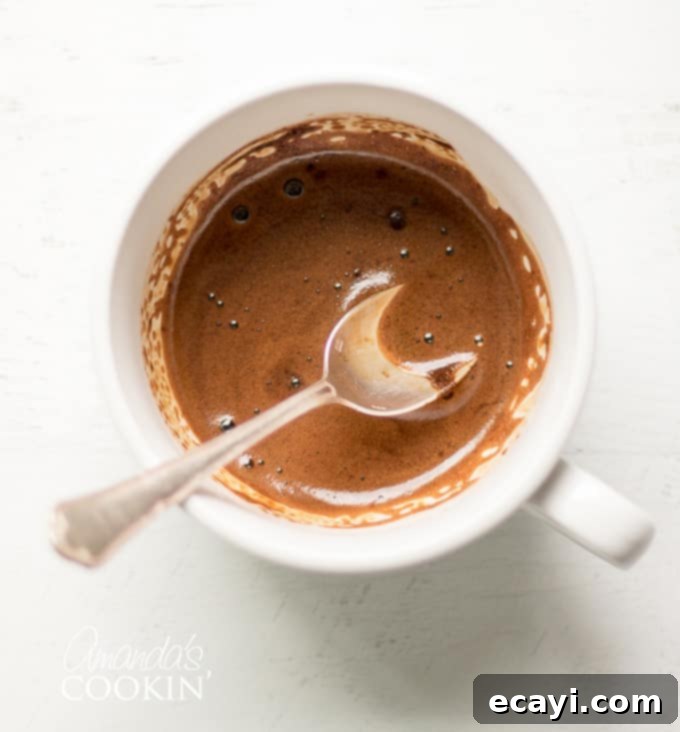
Creating the Decadent Mascarpone Filling and Frosting:
- In a large bowl, combine the mascarpone cheese, sifted confectioners’ sugar, pure vanilla extract, and your chosen liqueur (amaretto, Kahlua, or brandy). Whisk these ingredients together just until they are smoothly blended and free of any lumps. Be careful not to overmix mascarpone, as it can separate.
- In a separate bowl, using a stand mixer with a whisk attachment or a hand mixer, whip the cold heavy cream on medium-high speed until it forms firm peaks. This means the cream will hold its shape when the whisk is lifted.
- Gently fold about one-quarter of the whipped cream into the mascarpone mixture using a rubber spatula to lighten it. Then, with a light hand, fold in the remaining whipped cream until just combined. This folding technique keeps the mascarpone cream light and airy. Reserve a portion of this mixture for the frosting (as detailed in the “For the frosting” section below).
Assembling Your Tiramisu Masterpiece:
- Ensure your cake layers are completely cool. If the tops of your cake layers have risen into a dome (crowned), use a long serrated knife and a gentle sawing motion to level them. This creates flat surfaces for stacking and a more professional appearance. Place one leveled cake layer, right-side up, on a cardboard round or directly onto your chosen cake plate. If using a cake plate, protect it with strips of wax or parchment paper tucked underneath the edges of the cake to keep the plate clean during frosting.
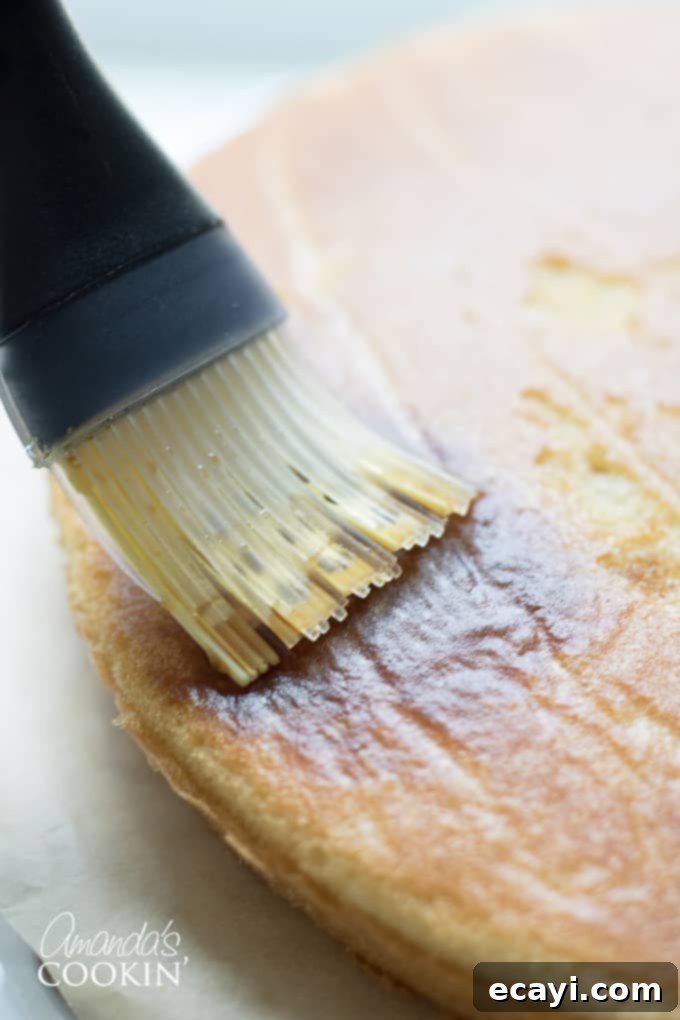
- Using a pastry brush or a small spoon, generously soak this bottom cake layer with about one-third of the prepared espresso syrup. Ensure the syrup is distributed evenly for maximum flavor and moisture.
- Carefully spread approximately 1 1/4 cups of the mascarpone cream filling evenly over the syrup-soaked cake layer. Then, gently press the finely chopped chocolate into the mascarpone filling. This adds a delightful crunch and rich chocolatey flavor.
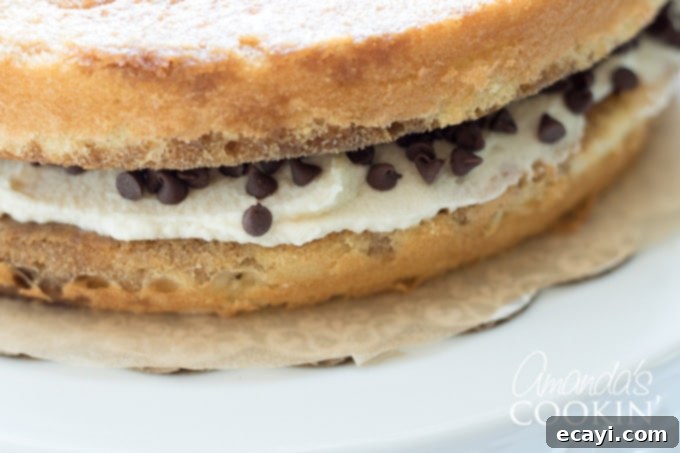
- Take your second cake layer and place it on your counter. Soak the top of this layer with half of the remaining espresso syrup. Once soaked, carefully invert this layer and position it, soaked side down, directly over the mascarpone filling on your first cake layer. Finally, soak the top of this assembled cake (which was the bottom of the second layer) with the very last of the remaining espresso syrup.
Finishing Touches: The Frosting:
Now, let’s prepare the final frosting for your Tiramisu Cake. This is where the magic truly comes together!
- Whisk 1 to 1 1/2 tablespoons of the remaining espresso extract into the reserved portion of the mascarpone filling you prepared earlier. Taste as you go to determine your preferred intensity of coffee flavor. If the frosting seems a little too soft to spread smoothly, gently press a piece of plastic wrap directly against its surface and refrigerate it for about 15 minutes. It’s also a good idea to briefly chill the assembled cake at this point if it feels warm, as this will help the frosting adhere better.
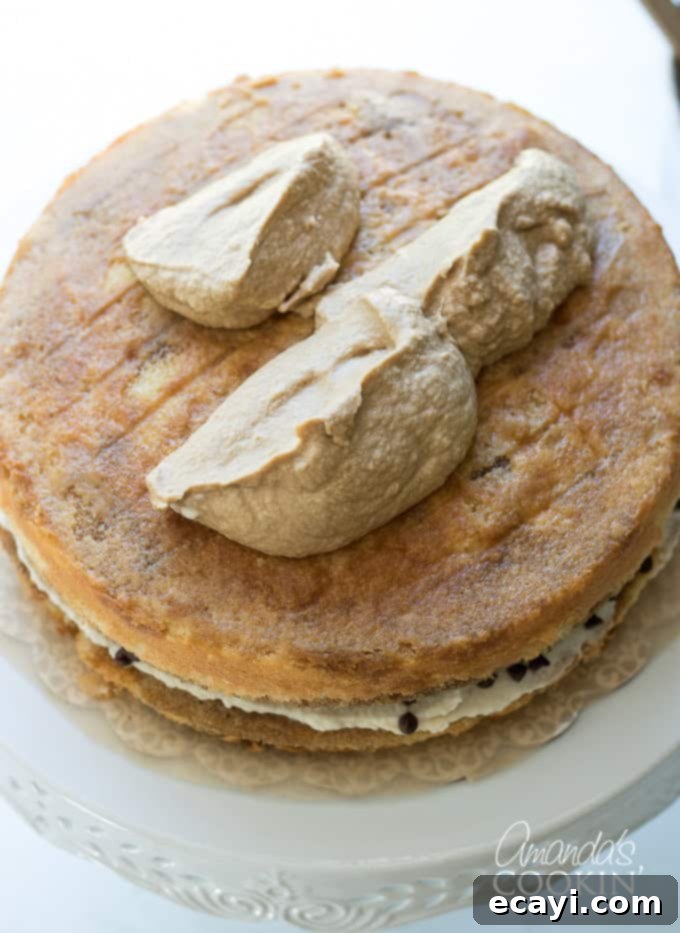
- Using a long metal icing spatula, carefully and evenly smooth the mascarpone-espresso frosting around the sides of the cake and over the top. Aim for a clean, elegant finish.
- For the best flavor development and to allow all the elements to meld beautifully, refrigerate the frosted cake for at least 3 hours. For an even richer taste and firmer texture, you can refrigerate it for up to 1 day before serving. This chilling period is crucial for the cake to set properly and for the flavors to fully harmonize.
- Just before you are ready to serve this glorious dessert, dust the top of the cake generously with cocoa powder using a fine-mesh sieve or a cocoa duster. Alternatively, you can top it with delicate shaved chocolate for a different visual and textural appeal.
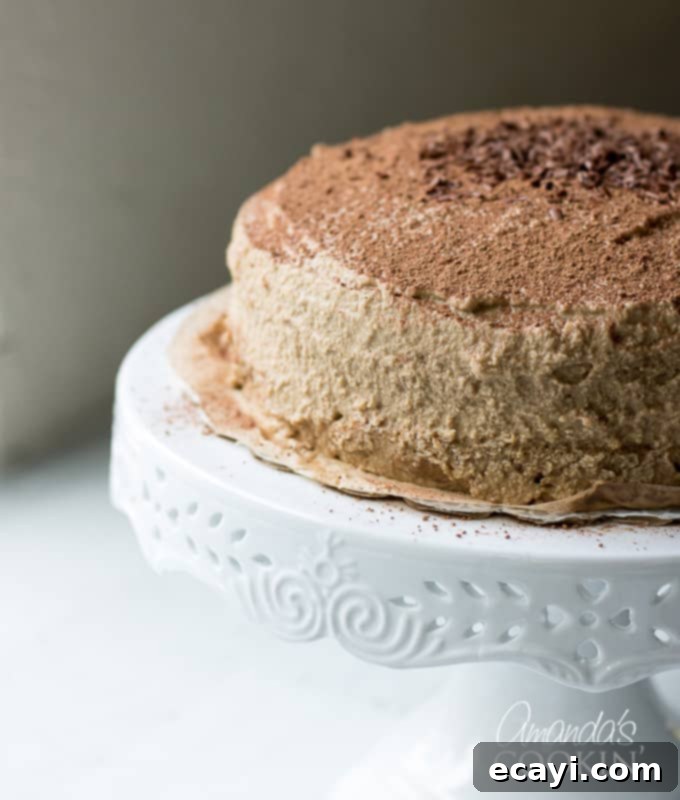
Elevating Your Tiramisu Cake with Creative Decorations
While a simple dusting of cocoa powder is the classic and elegant finish for a Tiramisu Cake, you can certainly add extra flair to make your dessert even more visually captivating. Here are a few ideas to enhance its beauty and impress your guests:
- Espresso Bean Accents: After dusting with cocoa, strategically place whole chocolate-covered espresso beans around the top edge of the cake or in a decorative pattern in the center. These add a gourmet touch and an extra burst of coffee flavor.
- Piped Buttercream Dollops: For a more elaborate look, use a piping bag fitted with a star tip to add delicate dollops of plain buttercream frosting or whipped cream around the cake’s edge or in a central design. This creates a lovely contrast in texture and color.
- Chocolate Curls or Shavings: Instead of simple shaved chocolate, create larger, more dramatic chocolate curls by running a vegetable peeler along the edge of a chocolate bar. Scatter these artfully over the cocoa-dusted surface.
- Stenciled Designs: For an advanced touch, place a stencil (such as a heart, star, or geometric pattern) on top of the cake before dusting with cocoa powder. Carefully remove the stencil to reveal a striking design.
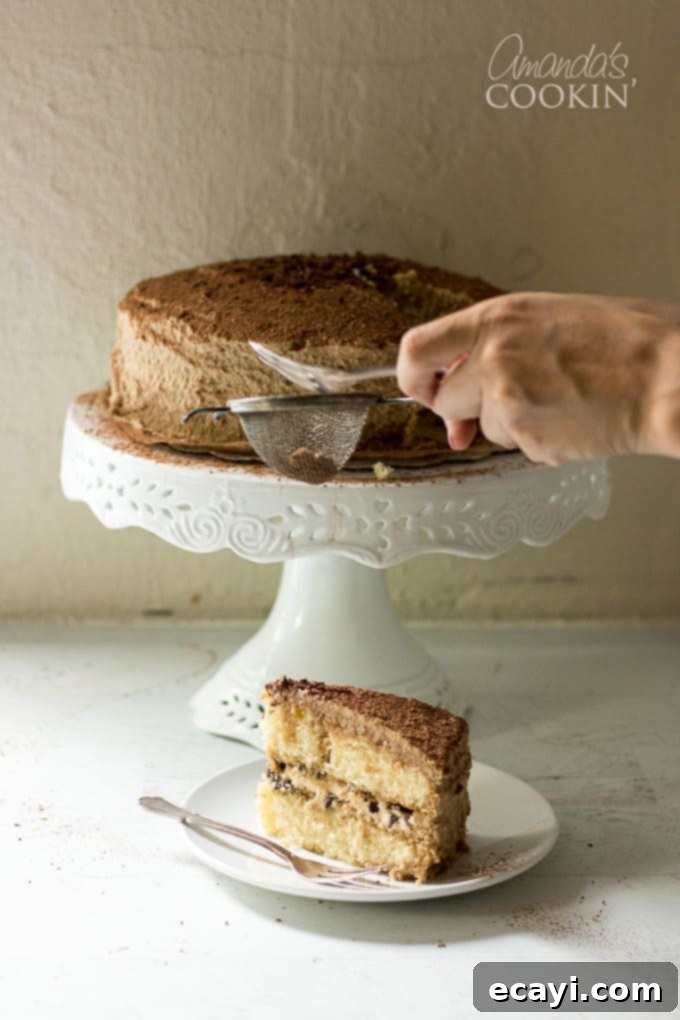
Frequently Asked Questions About Tiramisu Cake
Below, you’ll find answers to some common questions that arise when baking and serving this delightful Tiramisu Cake.
Can I use regular coffee for this Tiramisu Cake?
Traditional tiramisu desserts are specifically known for their rich espresso flavor, which is much more concentrated than regular brewed coffee. While you could technically use strongly-brewed regular coffee in a pinch for a classic ladyfinger-based tiramisu, for this layered cake recipe, we highly recommend sticking to instant espresso powder. Espresso powder provides that deep, authentic coffee essence without adding excess liquid that might compromise the cake’s texture. It’s readily available and makes a significant difference in the final flavor profile of your Tiramisu Cake.
Can I make this Tiramisu Cake ahead of time?
Absolutely! This Tiramisu Cake is an excellent make-ahead dessert. In fact, its flavors tend to deepen and meld even more beautifully after a period of chilling. You can prepare and assemble the entire cake 1 to 2 days in advance, storing it in the refrigerator. Just be sure to keep it well-covered to prevent it from absorbing any refrigerator odors and to maintain its moisture. For the best presentation, hold off on dusting with cocoa powder until just before you’re ready to serve.
Can I freeze this Tiramisu Cake?
Yes, you can certainly freeze your Tiramisu Cake to enjoy later! After the cake has been fully baked, assembled, and frosted (but *before* dusting it with cocoa powder), allow it to chill in the refrigerator for at least 4 hours. This helps the frosting firm up. Once firm, you can wrap the cake tightly in several layers of plastic wrap, followed by a layer of aluminum foil, to protect it from freezer burn. It can be stored in the freezer for up to 2 months. When you’re ready to serve, thaw the cake overnight in the refrigerator, then dust with cocoa powder just before serving.
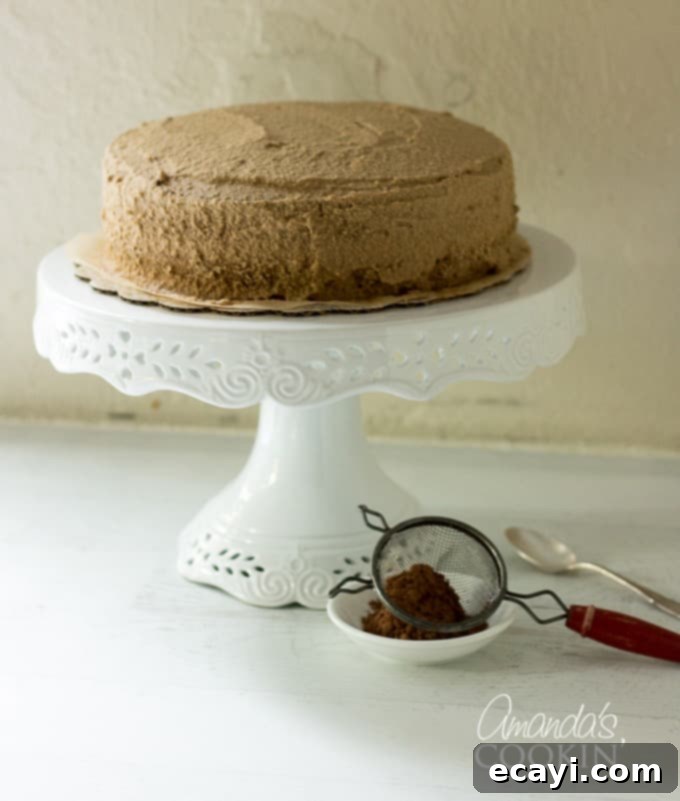
Can I substitute cream cheese for mascarpone in Tiramisu Cake?
While mascarpone cheese is a signature ingredient for its distinct rich, buttery, and slightly sweet flavor profile, a substitution can be made if absolutely necessary. However, keep in mind that using regular cream cheese will not yield the exact same luxurious taste and texture as mascarpone. If you need to substitute, try this method: beat together 8 ounces of full-fat cream cheese (ensure it’s not low-fat, as this impacts texture) with 4 tablespoons of heavy whipping cream and 2 tablespoons of softened unsalted butter until just blended and smooth. This combination aims to mimic the fat content and creaminess of mascarpone, providing approximately 10 ounces (or 1 1/4 cups) of a comparable substitute.
Can I replace mascarpone with ricotta?
Ricotta cheese can serve as a lower-cost alternative to mascarpone in some recipes. While the flavor and texture of a ricotta-based substitute will not be identical to authentic mascarpone, it can work surprisingly well, especially when combined with other ingredients. If you opt for ricotta, choose a full-fat, smooth variety and drain it thoroughly to remove excess moisture, as ricotta has a higher water content than mascarpone. This will help prevent your filling from becoming too thin.
What is the difference between mascarpone and cream cheese?
The primary distinctions between mascarpone cheese and cream cheese lie in their fat content, origin, and resulting flavor and texture. Mascarpone, often referred to as “Italian cream cheese,” is an Italian curd cheese made from cream that has been coagulated with tartaric acid. It boasts a significantly higher milk fat content than “American” cream cheese, which is typically made from milk. This higher fat content gives mascarpone its characteristic velvety smooth texture and a rich, profoundly creamy, and slightly sweet taste. Cream cheese, on the other hand, is tangier, firmer, and less rich due to its lower fat content. This makes mascarpone ideal for luxurious desserts like tiramisu, where its delicate flavor and opulent mouthfeel are paramount.
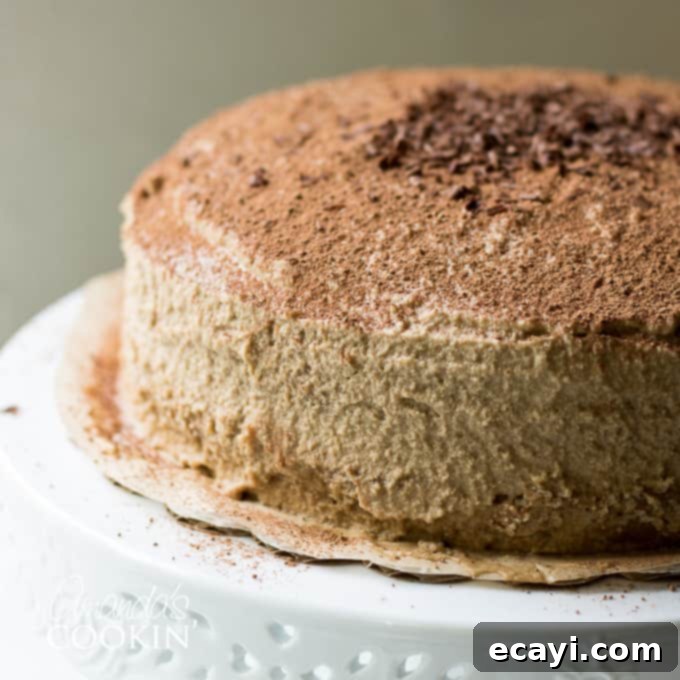
What kind of alcohol is typically used in tiramisu?
In traditional tiramisu recipes, the most commonly used alcoholic additions are Marsala wine or Madeira wine, which impart a sweet, fortified wine flavor that perfectly complements the coffee and mascarpone. However, many variations exist, and popular alternatives include dark rum, amaretto (an almond-flavored liqueur), or coffee liqueur (such as Kahlua or Tia Maria). Each adds its own unique aromatic depth and complexity to the dessert. For this Tiramisu Cake, the recipe suggests amaretto, Kahlua, or brandy, offering flexibility based on your preference.
Can you get drunk from eating Tiramisu?
While tiramisu often contains a small amount of alcohol, it’s typically used for flavoring rather than intoxication. The alcohol content in a single serving is generally very low and largely dissipates during the preparation process, especially if the cake is baked. To put it into perspective, you would need to consume an incredibly large quantity – approximately 30 whole tiramisu cakes, based on the small amount of alcohol used in this recipe – to experience any intoxicating effects. So, rest assured, you can enjoy your delicious slice of Tiramisu Cake without worry!
How can I make a Tiramisu-inspired dessert using graham crackers?
If you’re looking for a delightful tiramisu-inspired dessert that uses graham crackers for an easy, no-bake option, you’re in luck! We have a fantastic recipe for Tiramisu Icebox Cake. This recipe features layers of graham crackers (or ladyfingers), a creamy, luscious cream cheese filling, and all the wonderful coffee flavors you’d expect from a tiramisu, making it a perfect lighter alternative that comes together effortlessly.
How many calories are in this Tiramisu Cake?
This particular 2-layer, 9-inch round Tiramisu Cake is designed to be generously cut into 12 slices. Based on the recipe’s ingredients and typical portion sizes, each individual slice contains approximately 525 calories. This information can be helpful for those monitoring their caloric intake while still indulging in this magnificent dessert.
Explore More Tiramisu-Inspired Desserts
Our love for the rich, coffee-infused, and creamy goodness of tiramisu runs deep, inspiring us to create a variety of delicious variations on this classic theme. If you’ve fallen for this Tiramisu Cake, we invite you to explore more of our favorite tiramisu-inspired desserts, each offering a unique twist on the beloved original:
- Tiramisu Trifle: A stunning, layered dessert perfect for feeding a crowd, featuring all the classic flavors in a beautiful presentation.
- Tiramisu Trifle in Mason Jars: Individual servings of our popular tiramisu trifle, ideal for parties or elegant personal treats.
- Tiramisu Icebox Cake: A simpler, no-bake option that layers graham crackers or ladyfingers with a creamy filling for an easy, yet decadent, dessert.
- Bailey’s Tiramisu Parfaits: An adult-friendly twist featuring the delightful creaminess of Bailey’s Irish Cream.
- Tiramisu Cheesecake: A rich and creamy cheesecake infused with tiramisu flavors, combining two dessert favorites.
- Individual Tiramisu: Perfectly portioned classic tiramisu, great for portion control or sophisticated gatherings.
This delightful recipe was originally shared on our blog on May 5, 2009, and continues to be a cherished favorite among our readers.
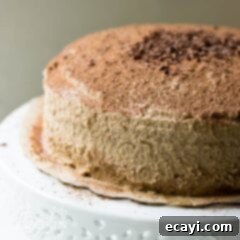
Tiramisu Cake
IMPORTANT – There are often Frequently Asked Questions within the blog post that you may find helpful. Simply scroll back up to read them!
Print It
Rate It
Save ItSaved!
Ingredients
For the cake:
- 2 cups cake flour
- 2 tsp baking powder
- ⅛ tsp baking soda
- ¼ tsp salt
- 10 tbsp unsalted butter room temperature
- 1 cup sugar
- 3 large eggs
- 1 large egg yolk
- 1 1⁄2 tsp pure vanilla extract
- 3⁄4 cup buttermilk
For the espresso extract:
- 2 tbsp instant espresso powder
- 2 tbsp boiling water
For the espresso syrup:
- ½ cup water
- ⅓ cup sugar
- 1 tbsp amaretto or Kahlua, or brandy
For the filling and frosting:
- 8 oz. container mascarpone cheese
- ½ cup confectioners sugar sifted
- 1 1⁄2 tsp pure vanilla extract
- 1 tbsp amaretto or Kahlua, or brandy
- 1 cup heavy whipping cream cold
- 2 ½ oz bittersweet or semisweet chocolate finely chopped, or about 1⁄2 cup store bought mini chocolate chips
Decoration:
- Cocoa powder for dusting
- Chocolate covered espresso beans for decoration (optional)
Things You’ll Need
-
Stand mixer
-
9-inch round cake pans
-
Sifter
-
Mixing bowls
-
Rubber spatula
-
Wire cooling racks
-
Parchment paper circles
-
Saucepan
-
Whisk
-
Cake plate
-
Measuring cups and spoons
-
Offset icing spatula
Before You Begin
- For the best appearance, don’t add the dusting of cocoa until you are ready to serve.
- This cake can be made 1 to 2 days ahead and stored in the refrigerator.
- Tiramisu desserts specifically mention espresso, not regular coffee. If you must use coffee, strongly-brewed coffee will work in a traditional cake. However, for this cake it would be better to use instant espresso powder.
- To freeze, after baking the cake, frost it but don’t dust it with cocoa. Once the cake has chilled in the refrigerator for at least 4 hours, you can put it in the freezer for up to 2 months.
- Can I use cream cheese? You will not get the same result with regular cream cheese, however, you can try beating together 8 ounces of cream cheese (full fat, not low fat) with 4 tablespoons of heavy whipping cream and 2 tablespoons of softened unsalted butter until just blended. This will give you the equivalent of approximately 10 ounces (1 1/4 cups) mascarpone.
- Can I replace mascarpone with ricotta? While the flavor of this substitute is not exactly the same as real mascarpone, it works very well in many recipes. Ricotta cheese can be a low-cost substitute for mascarpone.
Instructions
-
Center a rack in the oven and preheat the oven to 350 degrees F. Butter two 9 x 2 inch round cake pans, dust the insides with flour, tap out the excess and line the bottoms of the pans with parchment or wax paper. Put the pans on a baking sheet.
To make the cake:
-
Sift together the cake flour, baking powder, baking soda, and salt. Working with a stand mixer, preferably fitted with a paddle attachment, or with a hand mixer in a large bowl, beat the butter on medium speed until soft and creamy. Add the sugar and beat for another 3 minutes. Add the eggs one by one, and then the yolk, beating for 1 minute after each addition. Beat in the vanilla; don’t be concerned if the mixture looks curdled. Reduce the mixer speed to low and add the dry ingredients alternately with the buttermilk, adding the dry ingredients in three additions and the buttermilk in two (begin and end with the dry ingredients); scrape down the sides of the bowl as needed and mix only until the ingredients disappear into the batter.
-
Divide the batter evenly between the two pans and smooth the tops with a rubber spatula. Bake for 28-30 minutes, rotating the pans at the midway point. When fully baked, the cakes will be golden and springy to the touch and a thin knife inserted into the centers will come out clean. Transfer the cakes to a rack and cool them for about 5 minutes, then run a knife around the sides of the cakes, unmold them and peel off the paper liners. Invert and cool to room temperature right side up.
To make the extract:
-
Stir the espresso powder and boiling water together in a small cup until blended. Set aside.
To make the syrup:
-
Stir the water and sugar together in a small saucepan and bring just to a boil. Pour the syrup into a small heatproof bowl and stir 1 tablespoon of the espresso extract and the liqueur or brandy; set aside.
To make the filling and frosting:
-
Put the mascarpone, sugar, vanilla, and liqueur in a large bowl and whisk just until blended and smooth. Working with the stand mixer with the whisk attachment or with a hand mixer, whip the heavy cream until it holds firm peaks. Switch to a rubber spatula and stir about one-quarter of the whipped cream into the mascarpone. Fold in the rest of the whipped cream with a light touch.
To assemble the cake:
-
If the tops of the cake layers have crowned, use a long serrated knife and a gentle sawing motion to even them. Place one layer right-side up on a cardboard round or a cake plate protected with strips of wax or parchment paper. Using a pastry brush or a small spoon, soak the layer with about one-third of the espresso syrup. Smooth some of the mascarpone cream over the layer – use about 1 1/4 cups – and gently press the chopped chocolate into the filling. Put the second cake layer on the counter and soak the top of it with half the remaining espresso syrup, then turn the layer over and position it, soaked side down, over the filling. Soak the top of the cake with the remaining syrup.
Make the frosting:
-
Whisk 1 to 1 1/2 tablespoons of the remaining espresso extract into the remaining mascarpone filling. Taste the frosting as you go to decide how much extract you want to add. If the frosting looks as if it might be a little too soft to spread over the cake, press a piece of plastic wrap against its surface and refrigerate it for 15 minutes or so. Refrigerate the cake then.
-
With a long metal icing spatula, smooth the frosting around the sides of the cake and over the top.
-
Refrigerate the cake for at least 3 hours (or for up to 1 day) before serving – the elements need time to meld.
Decoration:
-
Just before serving, dust the top of the cake with cocoa, or top with shaved chocolate.
-
Optional: decorate the cake with chocolate covered espresso beans.
Nutrition
The recipes on this blog are tested with a conventional gas oven and gas stovetop. It’s important to note that some ovens, especially as they age, can cook and bake inconsistently. Using an inexpensive oven thermometer can assure you that your oven is truly heating to the proper temperature. If you use a toaster oven or countertop oven, please keep in mind that they may not distribute heat the same as a conventional full sized oven and you may need to adjust your cooking/baking times. In the case of recipes made with a pressure cooker, air fryer, slow cooker, or other appliance, a link to the appliances we use is listed within each respective recipe. For baking recipes where measurements are given by weight, please note that results may not be the same if cups are used instead, and we can’t guarantee success with that method.
